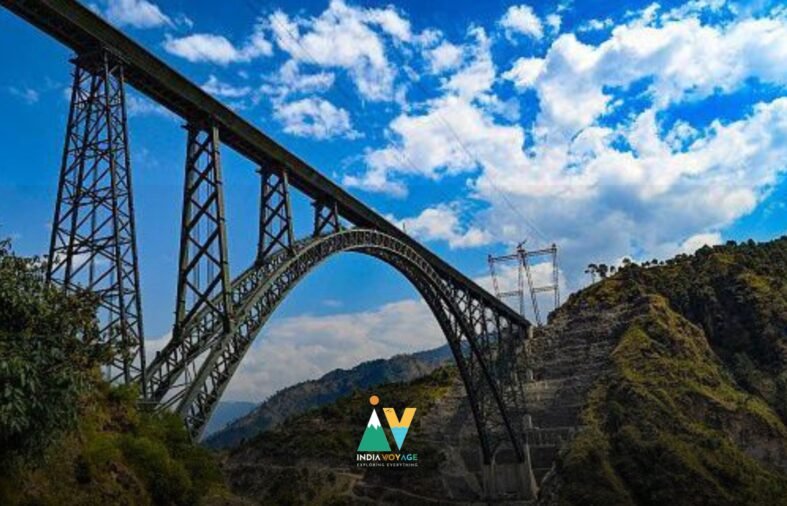Overview
On June 6, 2025, Prime Minister Narendra Modi officially dedicated the Chenab Railway Bridge to the nation, marking a historic moment for Jammu and Kashmir. Recognized as the world’s highest railway arch bridge, this 1,315-meter-long structure soars 359 meters above the Chenab River, forming a vital link in the Udhampur-Srinagar-Baramulla Rail Link (USBRL) project. This article delves into the bridge’s construction journey and its role in revolutionizing connectivity in the region.
Construction Highlights
The Chenab Railway Bridge is a feat of modern engineering, designed to conquer the rugged Himalayan terrain and extreme weather conditions. Construction commenced in 2017 and reached completion in August 2022, overcoming significant logistical and environmental challenges.
Key Construction Aspects:
- Materials and Magnitude: The bridge’s construction utilized approximately 28,660 metric tonnes of steel, secured with around 600,000 bolts. It also involved 10 lakh cubic meters of earth excavation and 66,000 cubic meters of concrete work, showcasing the project’s massive scale.
- Structural Innovation: Featuring a 480-meter main arch span, the bridge comprises 17 arch spans supported by steel trestles and concrete pillars anchored into the rocky cliffs. It is built to withstand earthquakes up to 8.0 on the Richter scale and wind speeds reaching 260 kmph.
- Construction Challenges: The bridge spans a deep gorge, requiring advanced techniques like the use of 915-meter cable crane towers for steel assembly. The project also included building 26 kilometers of access roads to support construction efforts in the remote region.
- Global Benchmark: Rising 359 meters above the river, the bridge surpasses the Eiffel Tower’s height by 35 meters, earning its title as the tallest railway arch bridge globally.
Connectivity Transformation
As a pivotal element of the 272-kilometer USBRL project, costing around ₹43,780 crore, the Chenab Railway Bridge is set to redefine transportation in Jammu and Kashmir. The project encompasses 36 tunnels spanning 119 kilometers and 943 bridges, creating an all-weather rail corridor.
Connectivity Benefits:
- Uniting Regions: The bridge enables direct rail connectivity between Jammu and the Kashmir Valley, integrating the region with India’s broader railway network. This is poised to enhance tourism, commerce, and economic growth.
- Strategic Advantage: By providing a reliable alternative to weather-dependent road travel, the bridge ensures year-round accessibility, strengthening regional ties and resilience.
- Network Integration: The bridge forms part of the Baramulla-Srinagar-Udhampur rail link, complemented by other engineering marvels like the Anji Bridge, India’s first cable-stayed railway bridge, also inaugurated on June 6, 2025.
Engineering and Environmental Resilience
Designed for one of the world’s most seismically active zones, the Chenab Railway Bridge incorporates cutting-edge engineering to ensure safety and longevity:
- Seismic Durability: The structure is engineered to endure earthquakes of up to 8.0 magnitude, critical for its Himalayan location.
- Wind Resistance: Built to withstand winds of 260 kmph, the bridge guarantees safe train operations in harsh weather.
- Environmental Harmony: The construction process minimized ecological impact, with careful integration into the rocky Himalayan landscape.
Broader Impact and Future Outlook
The Chenab Railway Bridge is more than a structural achievement; it symbolizes India’s commitment to bridging geographical divides. By connecting the Kashmir Valley to the national rail grid, it promises to boost economic activity, streamline trade, and promote tourism. A successful trial run in June 2024 confirmed the bridge’s operational readiness, setting the stage for its transformative role in 2025 and beyond.











Leave A Reply